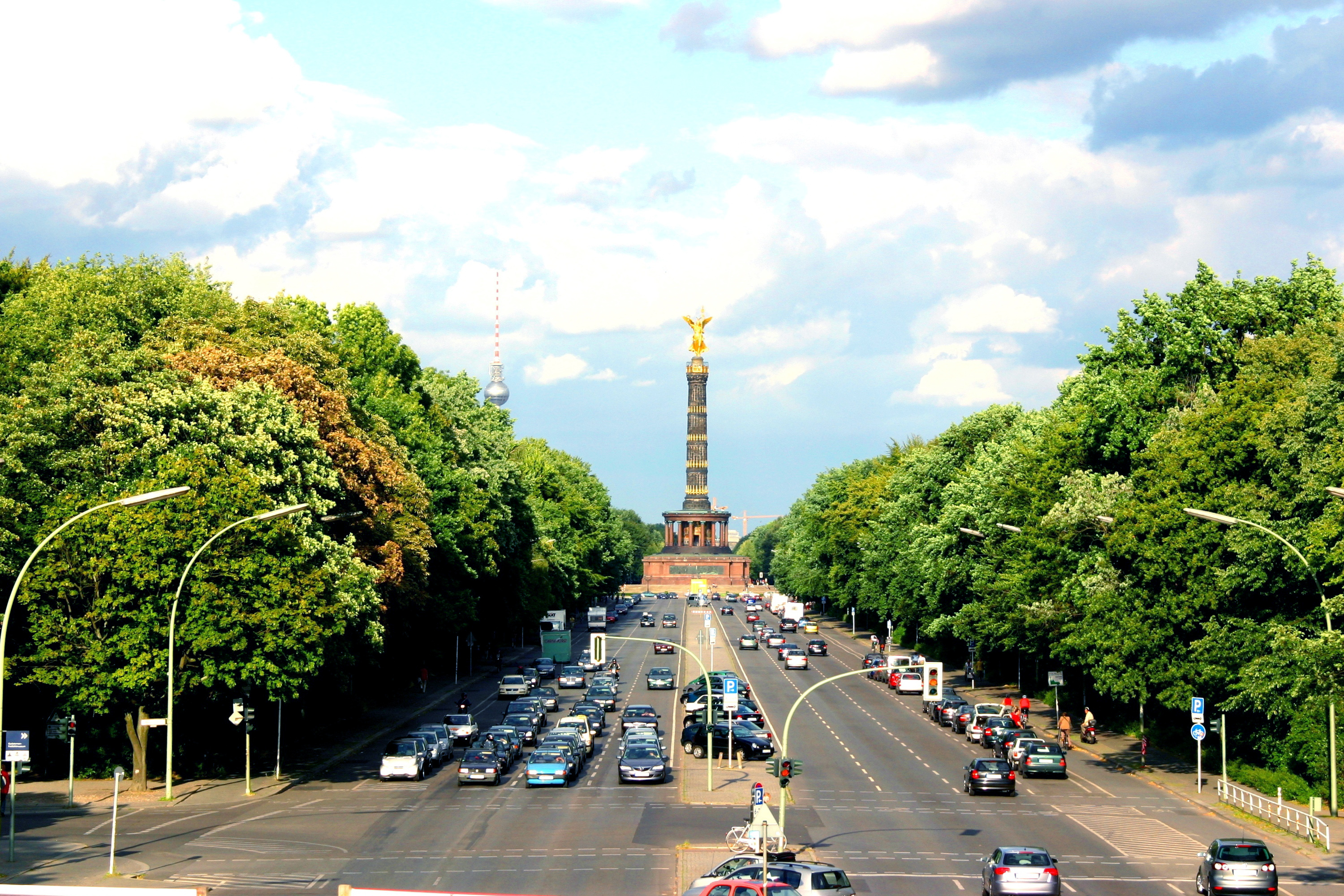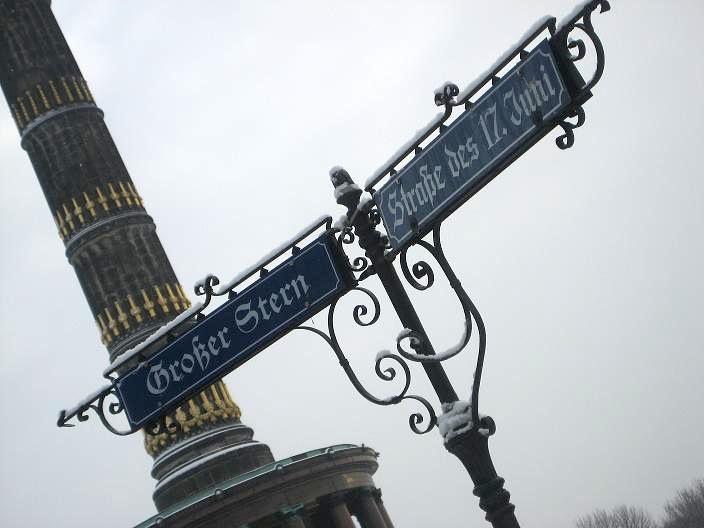Straße des 17. Juni on:
[Wikipedia]
[Google]
[Amazon]

 The Straße des 17. Juni (, en, 17th of June Street), is a street in central
The Straße des 17. Juni (, en, 17th of June Street), is a street in central
A photo of the street as it looked during the Nazi era as part of the Ost-West Achse
{{DEFAULTSORT:Strasse Des 17. Juni Streets in Berlin Tiergarten (park)
 The Straße des 17. Juni (, en, 17th of June Street), is a street in central
The Straße des 17. Juni (, en, 17th of June Street), is a street in central Berlin
Berlin ( , ) is the capital and List of cities in Germany by population, largest city of Germany by both area and population. Its 3.7 million inhabitants make it the European Union's List of cities in the European Union by population within ci ...
, the capital of Germany
Germany,, officially the Federal Republic of Germany, is a country in Central Europe. It is the second most populous country in Europe after Russia, and the most populous member state of the European Union. Germany is situated betwe ...
. Its name refers to the 17 June 1953 uprising in East Germany. It is the western continuation of the boulevard Unter den Linden
Unter den Linden (, "under the linden trees") is a boulevard in the central Mitte district of Berlin, the capital of Germany. Running from the City Palace to Brandenburg Gate, it is named after the linden (lime in England and Ireland, not rela ...
. It runs east–west through the Tiergarten, a large park to the west of the city centre. At the eastern end of the street is the Brandenburg Gate and the Platz des 18. März, it then passes the Soviet War Memorial before passing either side of Victory Column
A victory column, or monumental column or triumphal column, is a monument in the form of a column, erected in memory of a victorious battle, war, or revolution. The column typically stands on a base and is crowned with a victory symbol, such as a ...
(''Siegessäule'') in the middle of the park, and out of the park through the Charlottenburg Gate
Charlottenburg Gate (german: Charlottenburger Tor) with Charlottenburg Bridge (''Charlottenburger Brücke'') is a Neo-Baroque structure in the Charlottenburg district of Berlin. Erected in 1907 at the behest of the then independent City of Char ...
, terminating about half a kilometre later at ''Ernst-Reuter-Platz''. The street is a section of the main western thoroughfare radiating out from the centre of Berlin so the road continues to the west of ''Ernst-Reuter-Platz'', the first section of which is called ''Bismarckstraße''.
History
Before 1953, the street was called ''Charlottenburger Chaussee'', because it ran from the old city center (Berlin-Mitte
Mitte () (German for "middle" or "center") is a central locality () of Berlin in the eponymous district () of Mitte. Until 2001, it was itself an autonomous district.
Mitte proper comprises the historic center of Alt-Berlin centered on the ch ...
) to the borough of Charlottenburg
Charlottenburg () is a locality of Berlin within the borough of Charlottenburg-Wilmersdorf. Established as a town in 1705 and named after Sophia Charlotte of Hanover, Queen consort of Prussia, it is best known for Charlottenburg Palace, the ...
through the Tiergarten (Zoo; literally "animal garden"). The 1953 name change was made in order to honor an East German uprising and its victims. After Stalin
Joseph Vissarionovich Stalin (born Ioseb Besarionis dze Jughashvili; – 5 March 1953) was a Georgian revolutionary and Soviet political leader who led the Soviet Union from 1924 until his death in 1953. He held power as General Secretar ...
's death many East Berliners began a strike which also caused riots in a vain hope of getting rid of the communists. But the East German police struck back with brutal violence on 17 June 1953. (Another street, in northwest Berlin, got the name Charlottenburger Chaussee instead.)
It was made into a paved road in 1799, and owing to Berlin's rapid growth in the 19th century it became a major thoroughfare to the affluent western suburbs. At the outbreak of World War I
World War I (28 July 1914 11 November 1918), often abbreviated as WWI, was one of the deadliest global conflicts in history. Belligerents included much of Europe, the Russian Empire, the United States, and the Ottoman Empire, with fightin ...
in early August 1914, hundreds of thousands of Berliners cheered the military parade, which took place here. At the outbreak of World War II
World War II or the Second World War, often abbreviated as WWII or WW2, was a world war that lasted from 1939 to 1945. It involved the vast majority of the world's countries—including all of the great powers—forming two opposing ...
, no such scenes were ever observed, according to the American journalist and historian William L. Shirer
William Lawrence Shirer (; February 23, 1904 – December 28, 1993) was an American journalist and war correspondent. He wrote ''The Rise and Fall of the Third Reich'', a history of Nazi Germany that has been read by many and cited in scholarly w ...
.
Charlottenburger Chausee was a part of the ''Ost-West-Achse'' (East-West Axis), which during the Nazi period became a triumphal avenue lined with Nazi flags. During the Nazi
Nazism ( ; german: Nazismus), the common name in English for National Socialism (german: Nationalsozialismus, ), is the far-right totalitarian political ideology and practices associated with Adolf Hitler and the Nazi Party (NSDAP) in ...
era, the boulevard was made broader and the old Prussian Victory Column was moved from in front of the Reichstag to the roundabout in the middle of the Tiergarten, where it has remained since 1938.
The Charlottenburger Chaussee was to have formed one aspect of the remodelling of the city of Berlin into the renamed city called Germania, designed by Hitler, Albert Speer, and Paul Troost
Paul Ludwig Troost (17 August 1878 – 21 January 1934) was a German architect. A favourite master builder of Adolf Hitler from 1930, his Neoclassical designs for the ''Führerbau'' and the ''Haus der Kunst'' in Munich influenced the style of N ...
to be the capital of the Reich.
In the last weeks of World War II, when Berlin's airports were unusable, it was used as a landing strip.
In 1953, West Berlin renamed the street ''Straße des 17. Juni,'' to commemorate the People's uprising in East Berlin on 17 June 1953, when the Red Army
The Workers' and Peasants' Red Army ( Russian: Рабо́че-крестья́нская Кра́сная армия),) often shortened to the Red Army, was the army and air force of the Russian Soviet Federative Socialist Republic and, afte ...
and GDR Volkspolizei
The ''Deutsche Volkspolizei'' (DVP, German for "German People's Police"), commonly known as the ''Volkspolizei'' or VoPo, was the national police force of the German Democratic Republic (East Germany) from 1945 to 1990. The Volkspolizei was a h ...
shot protesting workers.
The street has in recent years been used for mega-events such as Love parade
The Love Parade (german: Loveparade) was a popular electronic dance music festival and technoparade that originated in 1989 in West Berlin, Germany. It was held annually in Berlin from 1989 to 2003 and in 2006, then from 2007 to 2010 in the Ruh ...
or live8
Live 8 was a string of benefit concerts that took place on 2 July 2005, in the G8 states and in South Africa. They were timed to precede the G8 conference and summit held at the Gleneagles Hotel in Auchterarder, Scotland, from 6–8 July 2005 ...
. In 2006, the street was closed for six weeks for use as the ''Fanmeile'' (fan mile) during the 2006 Football World Cup. It also serves as the starting point for the Berlin Marathon
The Berlin Marathon (german: Berlin-Marathon, ) is a marathon event held annually on the streets of Berlin, Germany on the last weekend of September. Held annually since 1974, the event includes multiple races over the marathon distance of , inc ...
. Every New Year's Eve, the street is also one of the gathering points in Berlin where usually over a million people gather to watch a stage show at the Brandenburg Gate, party and see fireworks go off at midnight. It is the largest such party in Europe, if not the world.
References
External links
A photo of the street as it looked during the Nazi era as part of the Ost-West Achse
{{DEFAULTSORT:Strasse Des 17. Juni Streets in Berlin Tiergarten (park)